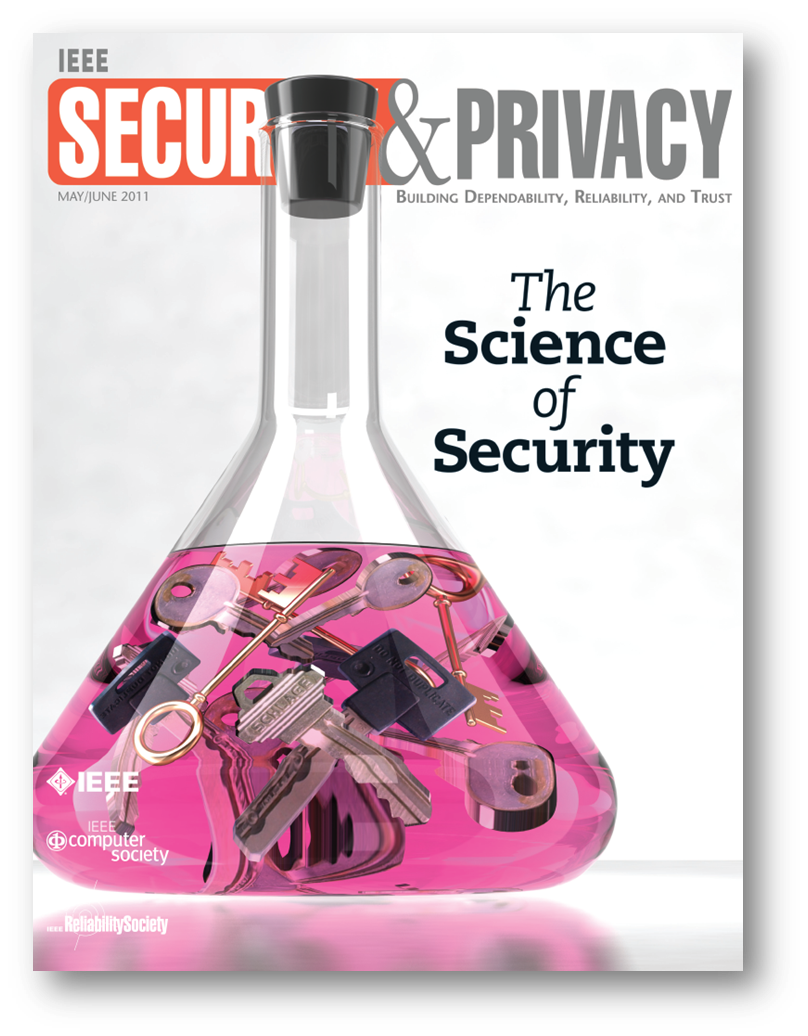Science of Security
Friday, May 27th, 2011

The Special Issue of IEEE Security and Privacy Magazine that I co-edited with Sal Stolfo on The Science of Security is now available.
It includes:
- David Evans and Sal Stolfo. Guest Editor’s Introduction: The Sciecne of Security [PDF].
- Sal Stolfo, Steven Bellovin, and David Evans. Measuring Security [PDF]
as well as three selected special issue articles: Security Modeling and Analysis (by Jason Bau and John Mitchell), On Adversary Models and Compositional Security (by Anupam Datta, Jason Franklin, Deepak Garg, Limin Jia, and Dilsun Kaynar), and Provable Security in the Real World (by Jean Paul Degabriele, Kenneth G. Paterson, and Gaven J. Watson).
I also gave a presentation about A Research Agenda for Scientific Foundations of Security at the NITRD Federal Cyber-Security Research event organized at Oakland 2011. 25 May 2011, Berkeley CA. [PPTX, PDF]
